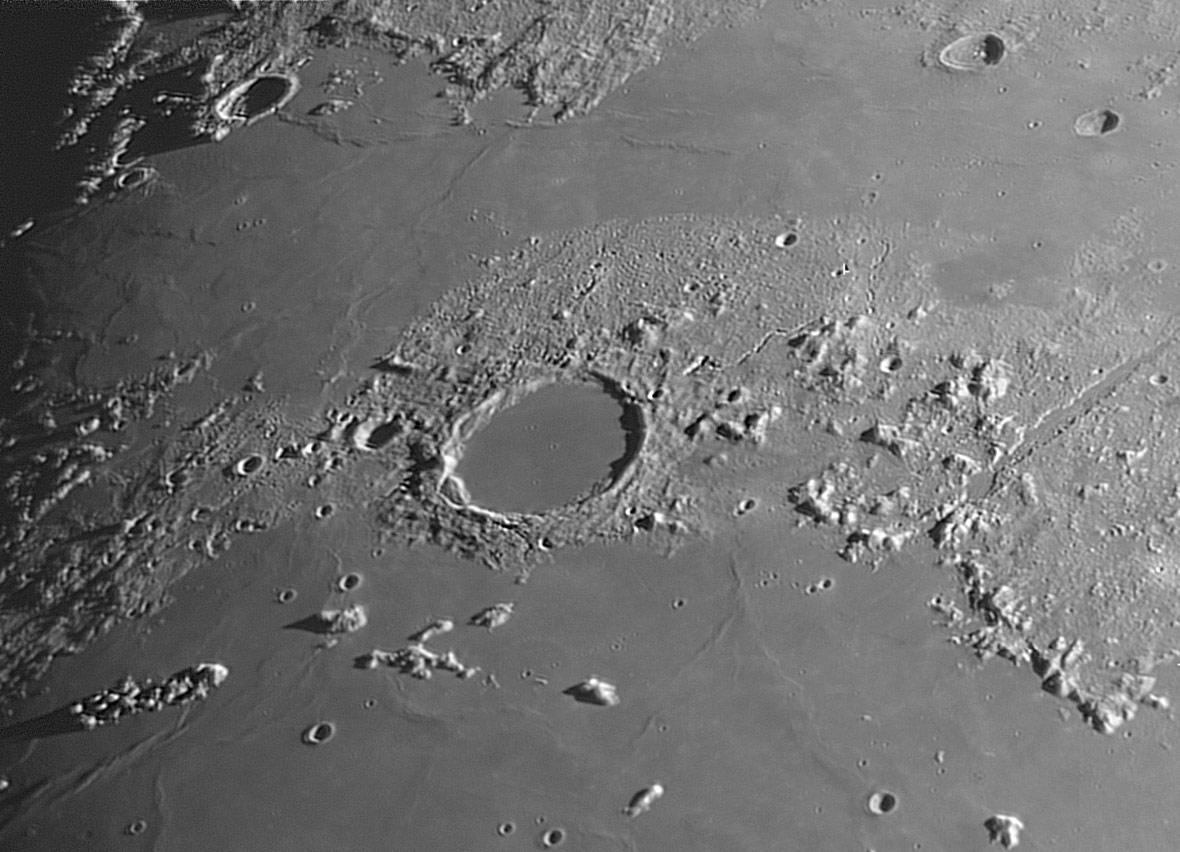|
|
| (3 intermediate revisions by the same user not shown) |
| Line 1: |
Line 1: |
| | __NOTOC__ | | __NOTOC__ |
| | =Lacus Niger Major= | | =Lacus Niger Major= |
| | + | <!-- Start of content --> |
| | <div class="post" id="post-839"> | | <div class="post" id="post-839"> |
| | | | |
| Line 6: |
Line 7: |
| | <p>[[File:Platon.jpg|platon.jpg]]<br /> | | <p>[[File:Platon.jpg|platon.jpg]]<br /> |
| | <em>image by [mailto:jeromegrenier@free.fr Jérôme Grenier]</em></p> | | <em>image by [mailto:jeromegrenier@free.fr Jérôme Grenier]</em></p> |
| − | <p>[http://www.lpod.org/?m=20060128 Langrenus] called it Lacus Panciroli, and for [[May_9,_2005|Hevelius]] it was Lacus Niger Major, but we all know it by the name [[May_11,_2004|Riccioli]] gave it on Grimaldi’s 1651 map - Plato. Its easy to understand why the earliest map-mappers named Plato, for it and its surroundings are one of the most impressive areas of the Moon. Plato is near the junction of a broad Vee, defined by the sweep of the front of the lunar Alps and the [http://www.lpod.org/?m=20060418 Terra Grandinis] peninsula, conspicuous between the mare expanses of Imbrium and Frigoris. Plato’s dark floor - hence Hevelius’ name, Big Black Lake - is a distinctive feature even with binoculars (or primitive telescopes). And Jérôme’s image with an 8″ telescope even captures the three largest pits on Plato’s floor, details that weren’t known at all until [http://www.lpod.org/?page_id=632 1878]. Notice also the largest of the sinuous rilles named after Plato. Another observing prize in this Imbriumic corner is the Alpine Valley which slices straight through the Alps like a knife through a rubbly cake. Once again Jérôme’s mastery captures the illusive sinuous rille on the middle of the Valley.</p> | + | <p>[[January_28,_2006|Langrenus]] called it Lacus Panciroli, and for [[May_9,_2005|Hevelius]] it was Lacus Niger Major, but we all know it by the name [[May_11,_2004|Riccioli]] gave it on Grimaldi’s 1651 map - Plato. Its easy to understand why the earliest map-mappers named Plato, for it and its surroundings are one of the most impressive areas of the Moon. Plato is near the junction of a broad Vee, defined by the sweep of the front of the lunar Alps and the [[April_18,_2006|1878]]. Notice also the largest of the sinuous rilles named after Plato. Another observing prize in this Imbriumic corner is the Alpine Valley which slices straight through the Alps like a knife through a rubbly cake. Once again Jérôme’s mastery captures the illusive sinuous rille on the middle of the Valley.</p> |
| | <p>[mailto:tychocrater@yahoo.com Chuck Wood]</p> | | <p>[mailto:tychocrater@yahoo.com Chuck Wood]</p> |
| | <p><strong>Technical Details:</strong><br /> | | <p><strong>Technical Details:</strong><br /> |
| Line 16: |
Line 17: |
| | <p><b>Tomorrow's LPOD:</b> [[January 8, 2007|A Dome on the Limb]] </p> | | <p><b>Tomorrow's LPOD:</b> [[January 8, 2007|A Dome on the Limb]] </p> |
| | </div> | | </div> |
| − | ----
| + | <!-- End of content --> |
| − | ===COMMENTS?===
| + | {{wiki/ArticleFooter}} |
| − | Register, and click on the <b>Discussion</b> tab at the top of the page.
| |
| − | <hr>
| |
| − | <!-- | |
| − | You can support LPOD when you buy any book from Amazon thru [[Support_ LPOD|LPOD]]!
| |
| − | -->
| |
| − | <span style="font-size:88%">
| |
| − | <center>
| |
| − | Contributions to http://www2.lpod.org/ are licensed under a Creative Commons Attribution No-Derivative-Works Non-Commercial 3.0 License. [http://www.creativecommons.org/licenses/by-nc-nd/3.0 http://www.wikispaces.com/i/creativecommons/by-nc-nd_3.0_80x15.png]<br>
| |
| − | </center>
| |
| − | </span>
| |




